DEFINITION OF TERMS:
- KEYSTONE means they are listed by National Wildlife Federation as core plants for a wildlife garden in my ecoregion (Ecoregion 8).
- NOT QUITE NATIVE means they are slightly out of range but adjacent to NYS as determined by GoBotany and NY Flora Atlas.
- Otherwise the plant is a NY-native or native to the area noted.
Kalm’s St. John’s wort (Hypericum kalmianum)
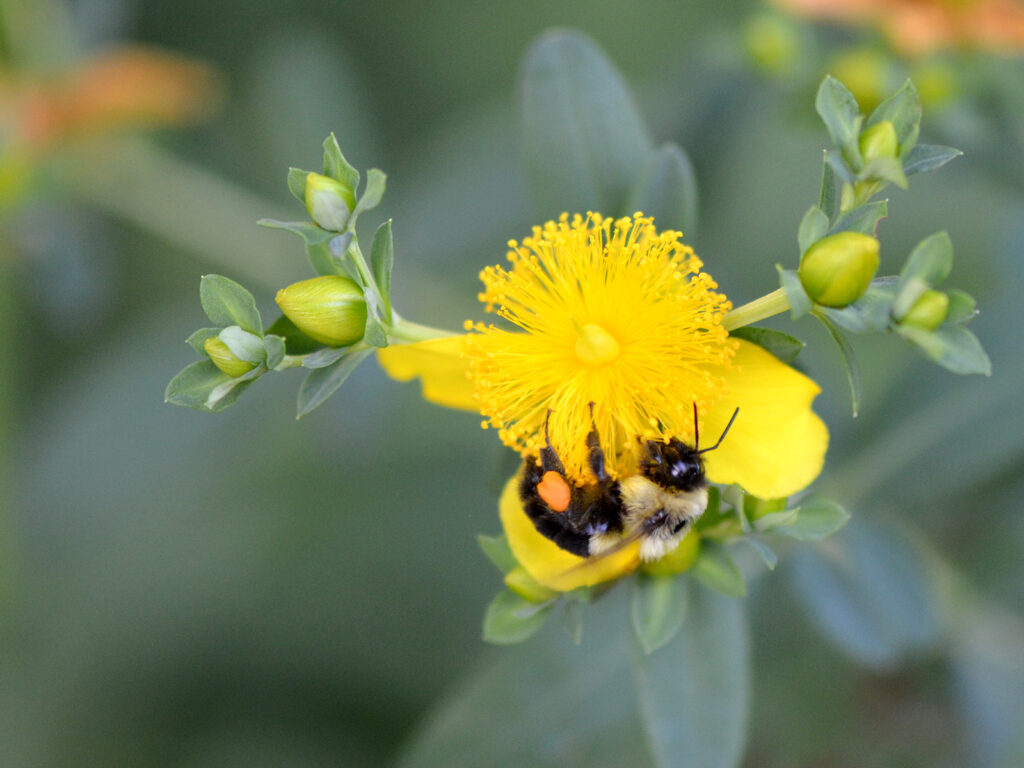
Kalm’s St. John’s wort has nice foliage and the usual yellow flowers. This is a young plant, just planted the previous fall. It grew to be about 3-4 feet tall, but seemed to be reaching out of its shady location toward the sun.
One spring we found it completely dead, BUT it left a surprise: a somewhat large seedling about six feet from the parent plant in a sunny spot! It’s doing well there. Now we’re discovering quite a few small seedlings here and there, but not so many to be a problem. They’re easy to notice and would be easy to pull out if we wanted to (but so far, we don’t!)
- Learn more:
- Wildflower Center: Kalm’s St. John’s wort
- Native Plant Trust: Kalm’s St. John’s wort
Shrubby St. John’s wort (Hypericum prolificum)
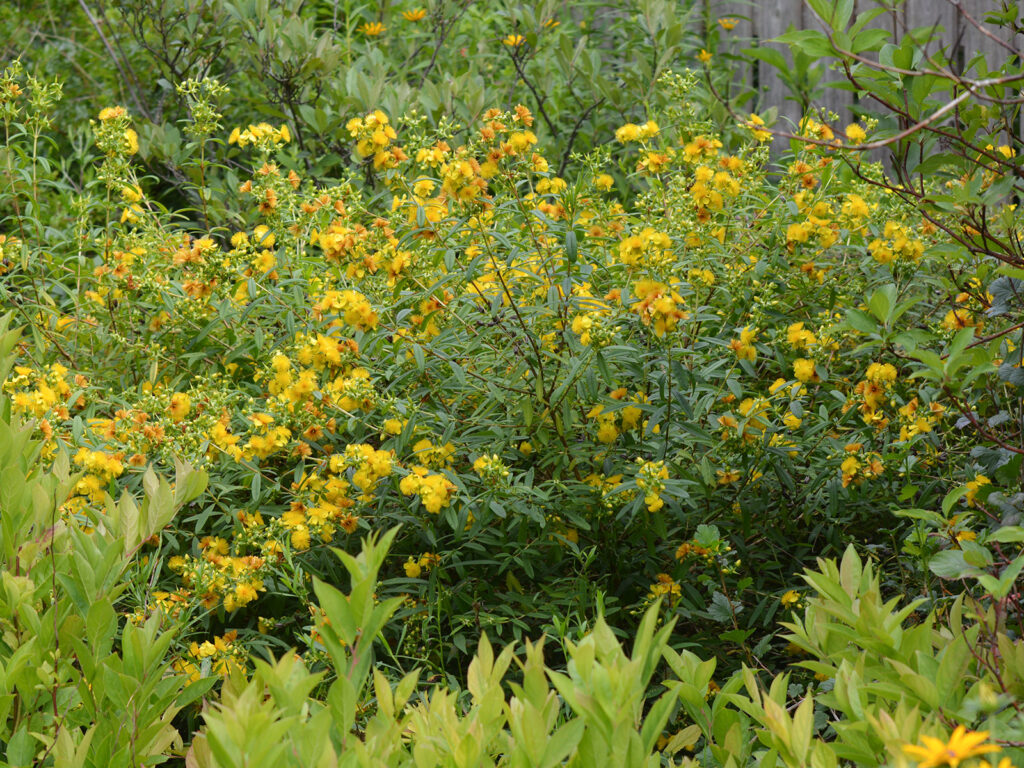
It has become quite large in our hedgerow and is a beautiful source of golden yellow flowers the bees love. Its foliage is attractive, too.
It seems to readily reseed, which I guess is why it’s named “prolificum”!
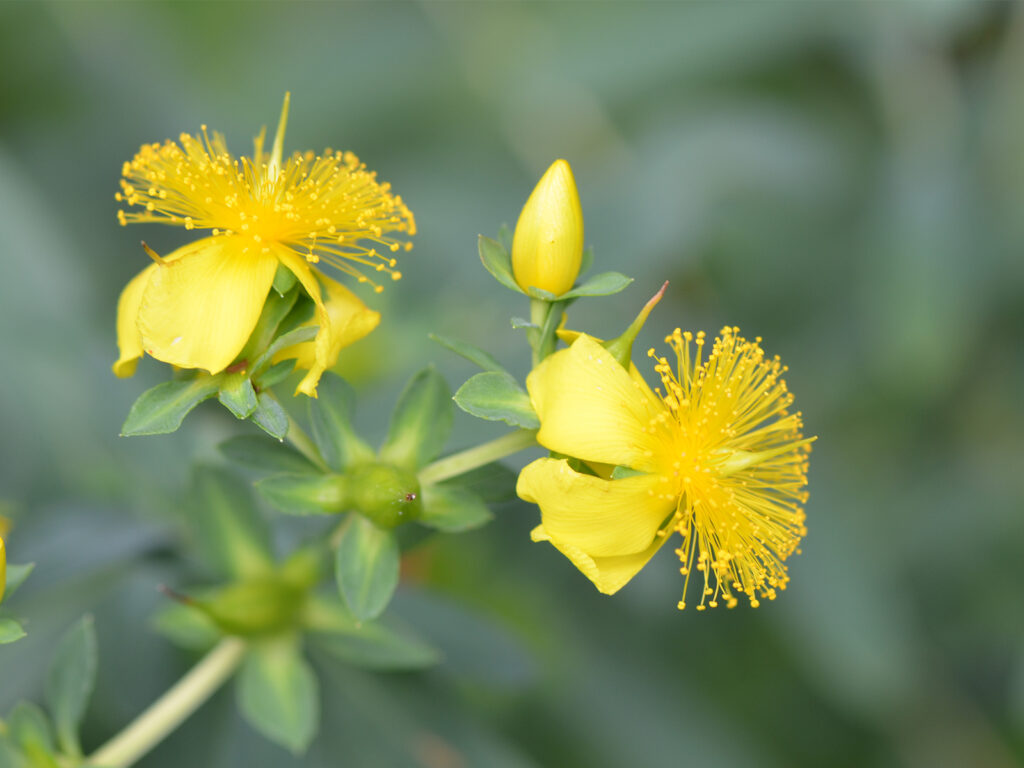
It has beautiful golden flowers.
Wildlife: Intermediate
- Learn more:
- Wildflower Center: Shrubby St. John’s wort
- Native Plant Trust: Shrubby St. John’s wort
Inkberry (Ilex glabra)
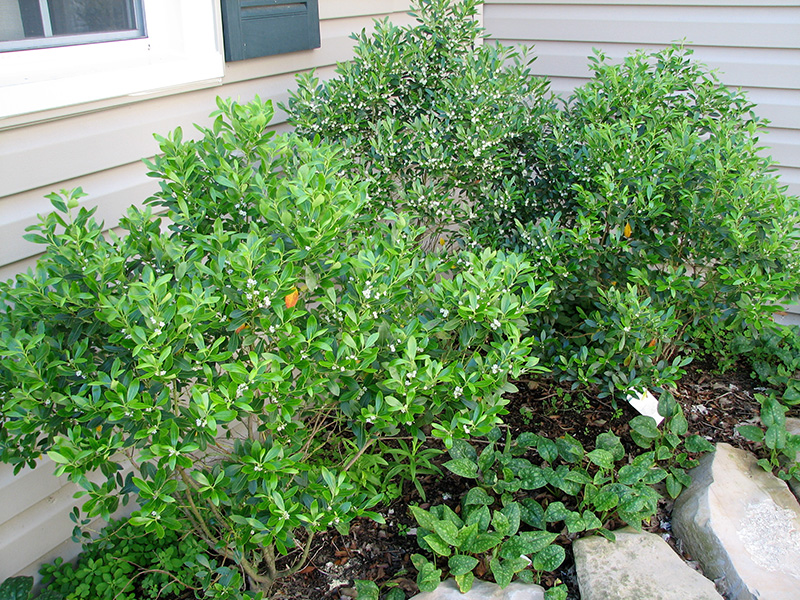
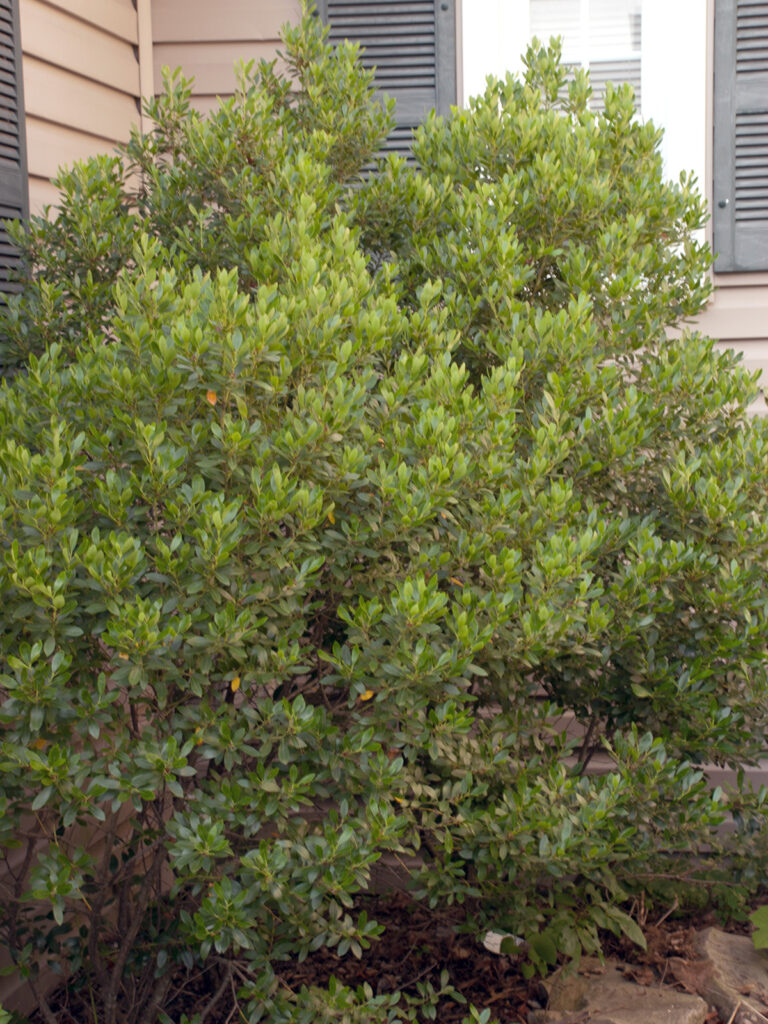
Inkberry is a type of holly, so like all hollies, a male is needed to pollinate the females for berries to develop. I know I have the cultivars ‘Densa’ and ‘Compacta’, both of which I believe are female. I may have acquired another cultivar along the way (or maybe the species), but I don’t know for sure that we have a male. Still, though, we do get berries, so I either have a male or they’re being pollinated by another male plant in the neighborhood. (Unfortunately, I’ve lost track of which plant is which.)
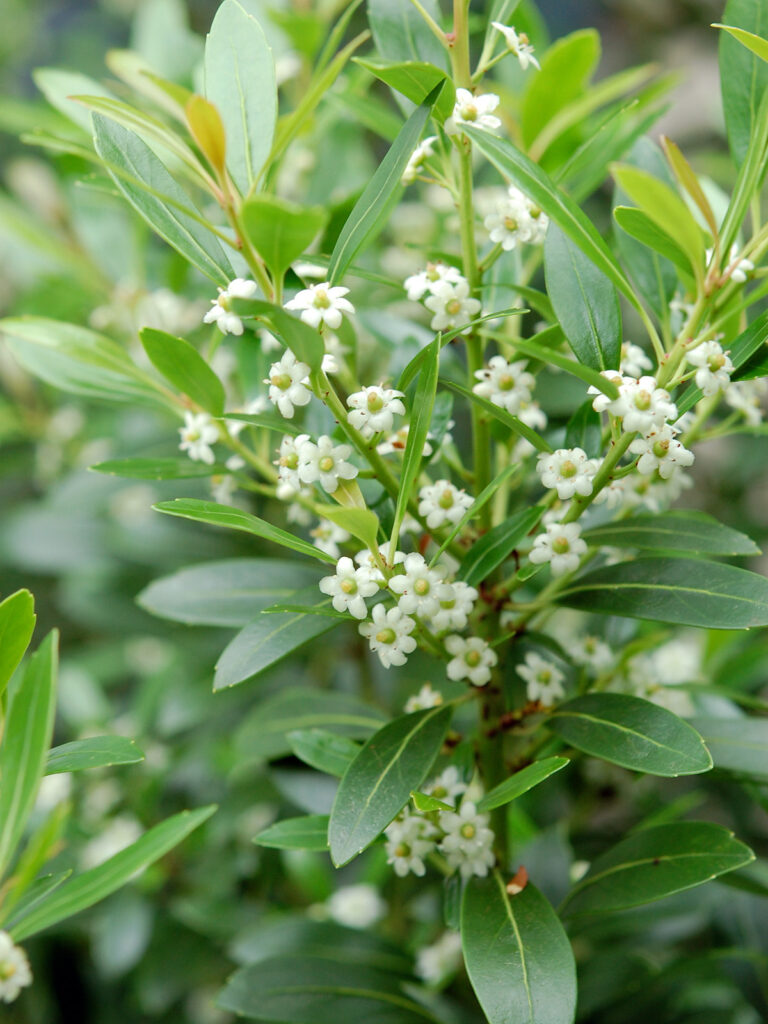
It has pretty little flowers, very attractive to bees.
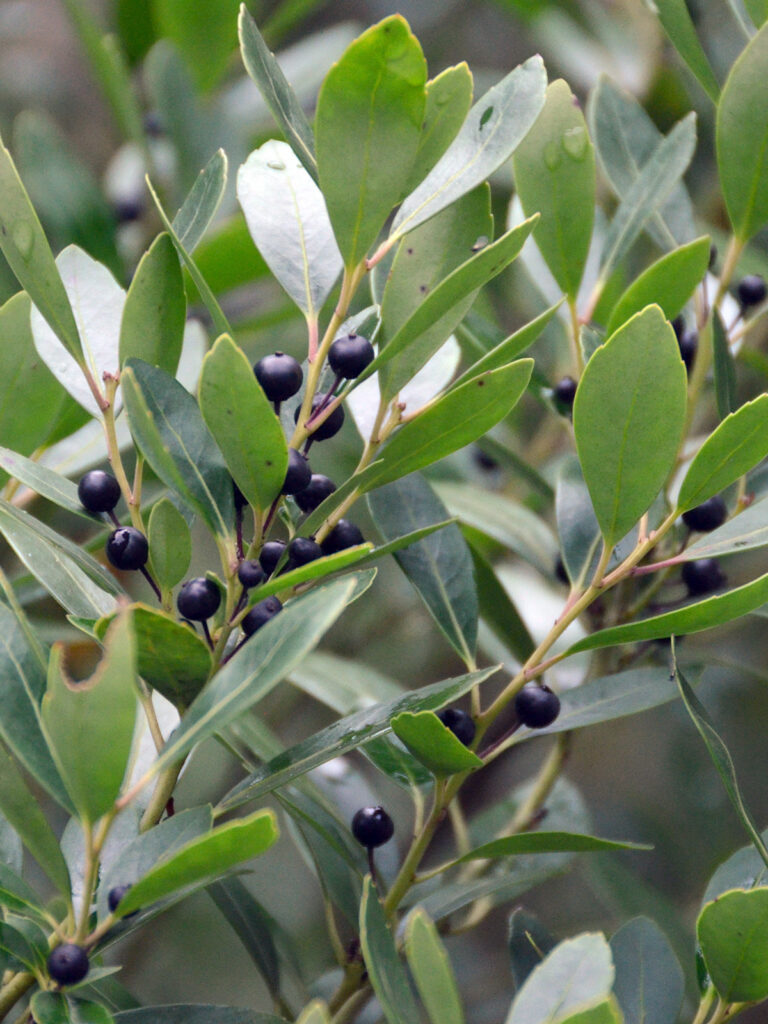
It has lustrous foliage and beautiful form. It looks very much like boxwood. As I read somewhere, if it had come from Asia, people would be clamoring for it, but they never expect our own natives to be so beautiful!
Wildlife: High; nectar for bees; berries for birds
- Learn more:
- Wildflower Center: Inkberry
Winterberry (Ilex verticillata)
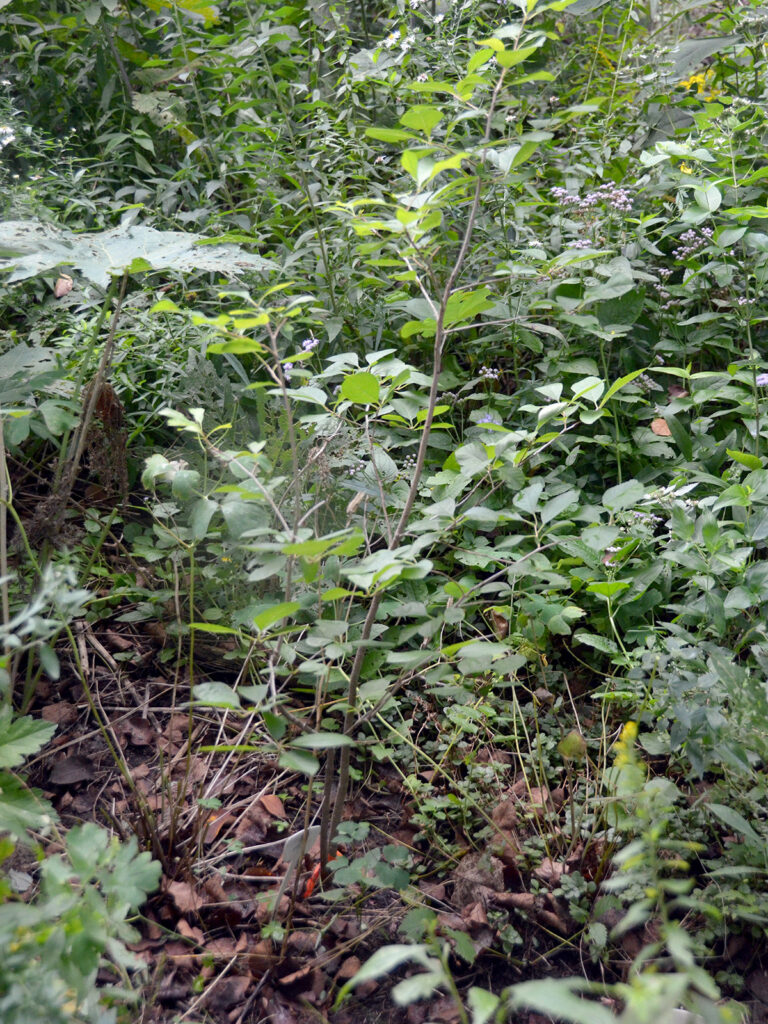
After having planted cultivars, in recent years we’ve planted the straight species.
Ordinarily we wouldn’t know which plants are male or female when they were seedlings, but when we bought them from our HGCNY plant sale, the small female already had berries, so we knew which was which.
This one, planted in the bed near the house, hasn’t gotten very large yet.
Winterberry (Ilex verticillata ‘Winter Red’)
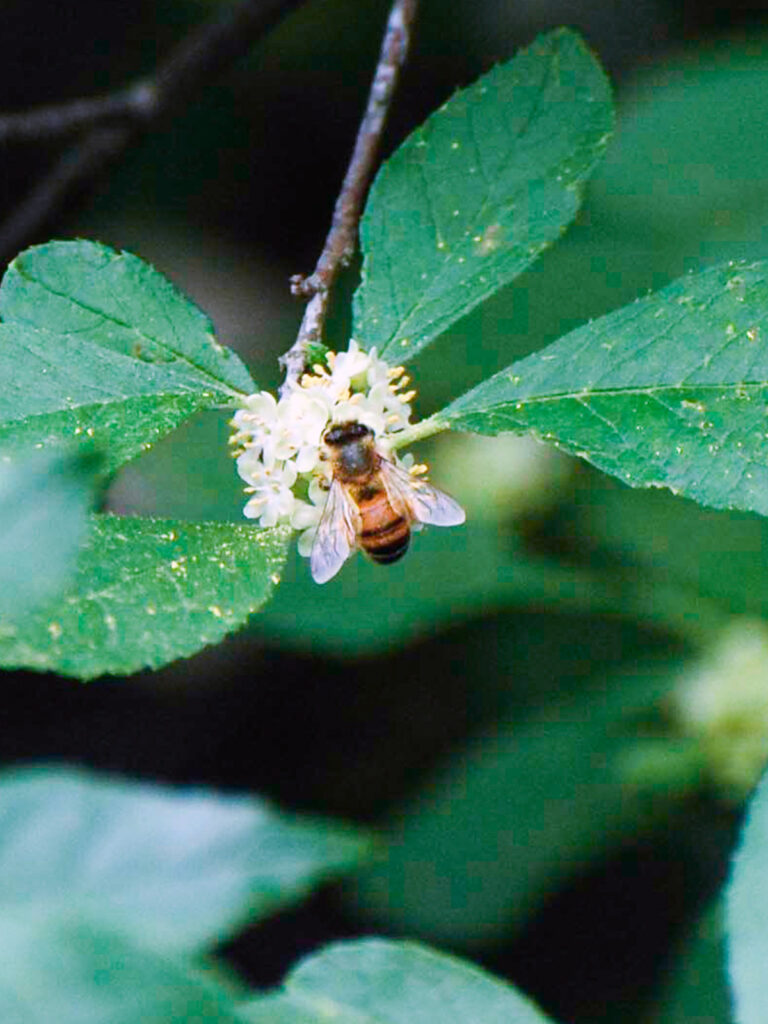
Winterberries are a type of native holly, and so it requires male and female plants. I have the cultivars ‘Winter Red’ with its male companion ‘Southern Gentleman.’ Only one male is needed for up to about ten females, and, of course, the females are the ones with the berries. One advantage of the cultivars is that they’re labeled, not specifically as male and female, but with different cultivar names that indicate their gender. We have one male in the back yard and one in the front yard, each of them having their own “harem” of three females.
We have since planted some of the straight species.
The bees love these tiny flowers as much or more than any other flowers. They must be loaded with nectar.
Wildlife: Cover, nesting; nectar for insects, berries for birds
Larval host: Henry’s elfin
- Learn more:
- Wildflower Center: Winterberry
- Cornell Woody Plants Database: Winterberry
Winterberry (Ilex verticillata ‘Sparkleberry’)

This is the female in late fall when the berries have turned red. Besides being very ornamental, the robins and the northern mockingbird love the berries. (Yes, we’ve had robins here in winter.)
Though it likes wet areas, we’ve found that it grows fine in our regular soil.
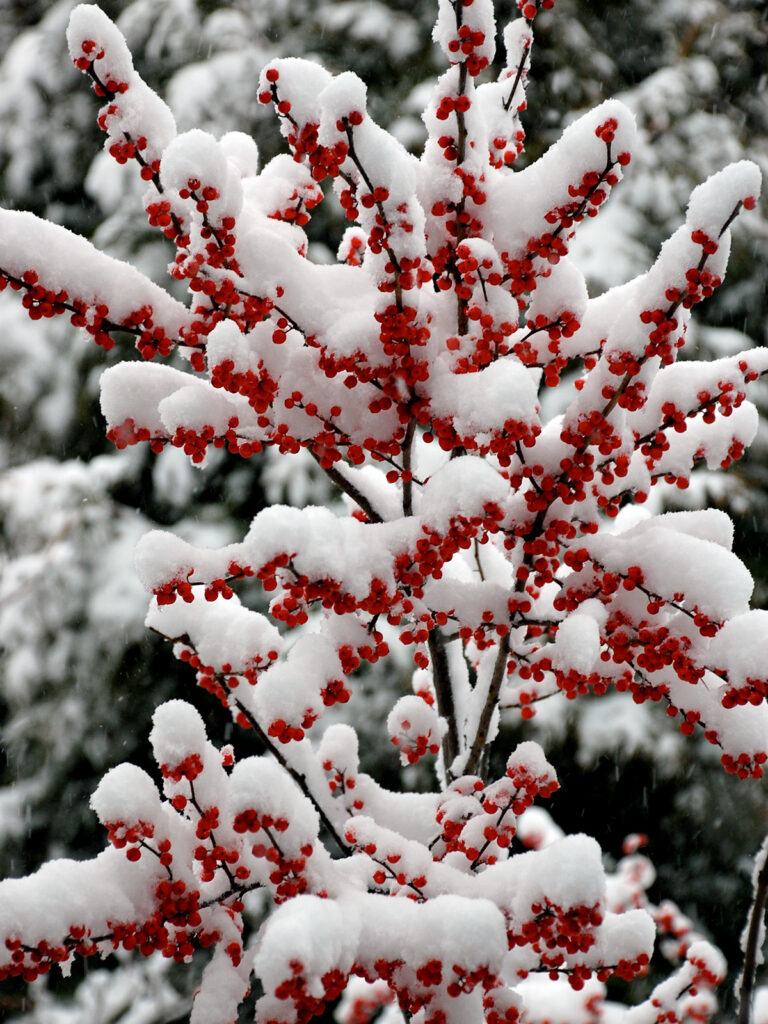
Winterberries are spectacular in the winter, especially when it snows and the bright red berries are highlighted by the white snow.
NOTE: I since learned that the commonly-available ‘Sparkleberry’ is a cross between I. verticillata, the native species, and I. serrata, an Asian species. We bought this before we chose to not plant cultivars and we certainly wouldn’t have planted a cross with a non-native species! At this point, though, we’ll probably leave it since it is already in decline with surrounding shrubs creating more shade than it would want.
We’ve since planted some native straight species, and we’ve found so far that at least one of them is a female.
